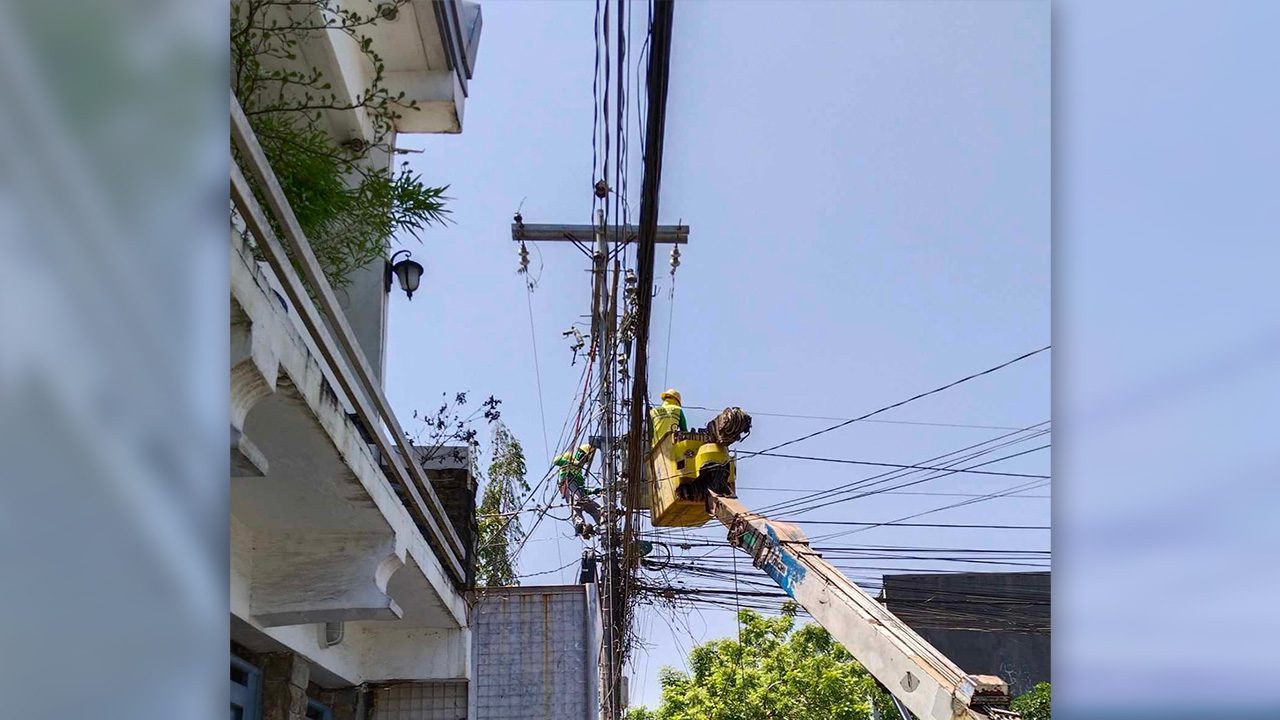SUMMARY
This is AI generated summarization, which may have errors. For context, always refer to the full article.

BACOLOD, Philippines – Amid the gripping power woes in the Visayas, a government task force in Negros Occidental is eyeing to establish a road map for a renewable energy (RE) transition in the province by June.
At the first Provincial Stakeholders’ Consultative Power Summit on Friday, May 3, power industry stakeholders challenged the Just Energy Transition (JET) council to come up with finality on the Provincial Energy Development Plan (PEDP) or the Power Road Map (PRM) of Negros Occidental by the end of June. The JET took up the challenge.
The power industry stakeholders – from generation, transmission, and distribution of electricity – included the government and business sectors, academia, e-warriors, and media, among others.
Led by the provincial government of Negros Occidental, with the support of Negros “green warriors,” the kickstart event for an immense RE transition was held at Sanctuario de La Salle in Bacolod City.
The JET is chaired by Negros Occidental Governor Eugenio Jose Lacson, who vowed to adhere with a proactive, strategic, and consultative approach, aiming to realize RE transition in a meaningful way.
Lacson stressed, “It’s high time now to move faster to address the perennial brownouts or even blackouts happening in Negros, plus the [unceasing] spiraling cost of electricity nowadays.”
Rafael “Lito” Coscolluela, former governor and now provincial consultant on energy and environment concerns and JET member, however, admitted that the quest for RE transition isn’t easy but is rather “bumpy and winding.”
“JET has a tedious job ahead,” Coscolluela said.
The JET was conceived after Lacson issued Executive Order (EO) No. 21-52, series of 2021, creating a provincial sector study group to endeavor a comprehensive study about RE.
The University of St. La Salle was tapped as the research arm, with a P2-million funding from the provincial government. After submitting their research outputs, Lacson issued EO No. 23-16 for the initial creation of the JET.
The JET, then, was tasked to look for and draw initiatives meant to ensure energy security in Negros. The “SecuRE Negros” was then created as a campaign slogan.
Following next was Lacson’s EO No. 24-09, declaring every third week of May as RE Week in Negros Occidental starting this 2024.
The first RE Week in the province will be held at the Ayala Malls-Capitol Central in Bacolod from May 20 to 24.
Red tape
Coscolluela, however, said the JET has so many things it has to hurdle, from policymaking to regulating and financing RE investments.
The biggest challenge, he said, is the bureaucratic red tape that discourages RE investors.
“Hence, JET needs to strategize and come up with particular measures how to crash or put an end to this bureaucratic red tape,” he said.
Coscolluela said the JET will push for a 100% solarized Negros Occidental before the current year ends.
“We will lobby to all the mayors to solarize all their municipal or city halls and other government edifices and facilities,” he said.
Next, he said, is the proposed incentivized local tax that will offer relief or discounts for RE investors through local ordinances.
Impossible to avoid
But, candid as he is, Coscolluela admitted, too, that Negros Island needs additional baseload power plants – RE or fossil-based – in order to “survive, live, and to move forward.”
Though Negros Occidental is positioning itself to be the “RE Capital of the Philippines,” Coscolluela said it’s impossible to avoid welcoming fossil-based power plants in the province right now given the current situation.
“Because even up to 2050, we can’t still achieve a 100% reliance on RE,” he said.
“What we are aiming for now is to meet or surpass the national target of 35% RE dependence by 2030,” the ex-governor said.
Frank Carbon, chief executive officer of the Metro Bacolod Chamber of Commerce and Industry, concurred with Coscolluela’s stance.
Carbon advocates for additional baseload power plants – RE or non-RE – in Negros to compensate for the fast-growing demand for power in the Visayas.
With the current power woes gripping the Visayas region, Carbon believes that it’s a must now for Negros to have additional in-land baseload plants to augment the lone power generator in the island, the Negros Geothermal Power Plant in Palinpinon, Valencia, Negros Oriental.
Negros needs around 300 to 450 megawatts of additional in-land generated power as soon as possible “in order to survive,” Carbon said.
But Coscolluela said the JET must not lose sight of what Negros is really aiming for, which is to be the country’s RE capital.
Joshua Villalobos, convenor of the Negrosanon Initiative for Climate and the Environment, said the province’s renewable energy transition “must be fast, fair, funded and forever.” – Rappler.com
Add a comment
How does this make you feel?



![[ANALYSIS] Why do we pay higher power rates when we have power outages?](https://www.rappler.com/tachyon/2024/07/tl-higher-power-rates-higher-power-outages.jpg?resize=257%2C257&crop=401px%2C0px%2C1080px%2C1080px)














There are no comments yet. Add your comment to start the conversation.